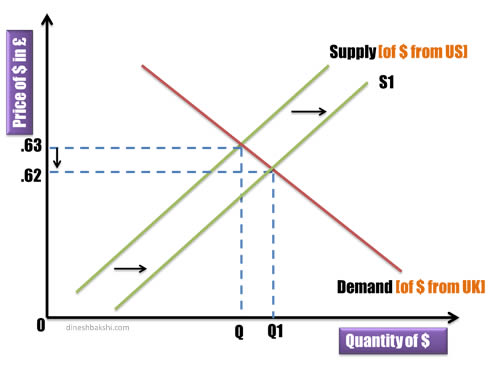Contents:


For example, you’ll find that the higher the interest rate, the lower the present value because the greater the discounting. That’s because $10,000 today is worth more than $10,000 received over the course of time. In other words, the purchasing power of your money decreases in the future. You can then look up the present value interest factor in the table and use this value as a factor in calculating the present value of an annuity, series of payments. Many accounting applications related to the time value of money involve both single amounts and annuities. On the other hand, the future value of an annuity will be greater than the sum of the individual payments or receipts because interest is accumulated on the payments.
By submitting the examination, you are attesting to the fact that you have https://1investing.in/ all the lessons and have performed all the exercises in the “Check Your Knowledge” section of the training. Or stream of installments in today’s dollars adjusted for interest and inflation is known as present value. In other words, it compares the acquiring control of a future dollar to that of a current dollar. Calculate the present value of an annuity due of 500 paid at the end of each month. A dollar invested today not only earns a return over a specific period of time, but that return earns a return as well. Advisory services provided by Carbon Collective Investment LLC (“Carbon Collective”), an SEC-registered investment adviser.
Present Value of Ordinary Annuity
The future value of an annuity is the total value of a series of recurring payments at a specified date in the future. Connect with a financial expert to find out how an annuity can offer you guaranteed monthly income for life. An annuity table, or present value table, is simply a tool to help you calculate the present value of your annuity.
- An annuity table cannot be used for non-discrete interest rates and time periods.
- Use knowledge and skills to manage financial resources effectively for a lifetime of financial well-being.
- The factor is determined by the interest rate and the number of periods in which payments will be made .
- An ordinary annuity generates payments at the end of the annuity period, while an annuity due is an annuity with the payment expected or paid at the start of the payment period.
For this particular formula, the present value of one dollar periodic cash flows is to be used for simplifying the calculation of payments larger than one dollar. An example of this equation in practice is determining the original amount of a loan. The present value of annuity is the current worth or cost of a fixed stream of future payments. This can be calculated using various financial tools, including tables and calculators, which are available on the web or in books of tables. Present value tables aren’t as precise as manual calculations or financial software programs because the tables contain a limited set of interest rates and payments.
Available Formats
You might want to calculate the present value of the annuity, to see how much it is worth today. The interest rate can be based on the current amount being obtained through other investments, the corporate cost of capital, or some other measure. The following table shows the value of this factor for various interest rates and time periods. This equation assumes that the first payment of the annuity is made at the end of the first time period.
Multiply the number in that cell by the amount of money you get each period. The present value of an annuity is the current value of future payments from that annuity, given a specified rate of return or discount rate. A present value annuity table allows you to estimate the present value of an annuity quickly. Present value refers to the current value of future payments from an annuity with a specified rate of return. In Lesson 8, you learned that the “Mortgage Constant” function is used to determine the annualized payment amount per $1 of loan amount, for a fully amortized loan with monthly compounding and payments. You learned how to calculate this annualized payment amount using the “Mortgage Constant” factors found in column 7 of the AH 505 tables.
This makes it very easy to see the interest rates and periods in a table, and look up the factor. Earlier cash flows can be reinvested earlier and for a longer duration, so these cash flows carry the highest value . An Annuity is a type of bond that offers a stream of periodic interest payments to the holder until the date of maturity. Studying this formula can help you understand how the present value of annuity works.
Each formula requires a periodic interest rate and the number of periods. All of the functions are based on compound interest – interest earned is added to principal and itself earns interest from that time on. Time value of money is the concept that a dollar received at a future date is worth less than if the same amount is received today. An amount received today can be invested towards future earnings or receive sooner utility.
Let’s say you anticipate receiving payouts at the end of the annuity period—that’s how an ordinary annuity works. You expect to receive 10 payments of $5,000 each at a discount rate of 5%. If you don’t have access to an electronic financial calculator or software, an easy way to calculate present value amounts is to use present value tables. You can view a present value of an ordinary annuity table by clicking PVOA Table. The present value of a future cash-flow represents the amount of money today, which, if invested at a particular interest rate, will grow to the amount of the sum of the future cash flows at that time in the future. The Present Value of Annuity Calculator applies a time value of money formula used for measuring the current value of a stream of equal payments at the end of future periods.
AccountingTools
As discussed above, an annuity table helps you determine the present value of an annuity. Once you’ve found that number, you can make more informed investment decisions to build the best possible retirement portfolio for you. Using an annuity table, you will multiply the dollar amount of your recurring payment by the given factor.

Our network of advisors will never recommend products that are not right for the consumer, nor will Annuity.org. Additionally, Annuity.org operates independently of its partners and has complete editorial control over the information we publish. An annuity is a series of payments that occur at the same intervals and in the same amounts. An example of an annuity is a series of payments from the buyer of an asset to the seller, where the buyer promises to make a series of regular payments. For example, ABC Imports buys a warehouse from Delaney Real Estate for $500,000 and promises to pay for the warehouse with five payments of $100,000, to be paid at intervals of one payment per year; this is an annuity.
An annuity is a series of payments that occur over time at the same intervals and in the same amounts. An annuity due arises when each payment is due at the beginning of a period; it is an ordinary annuity when the payment is due at the end of a period. A common example of an annuity due is a rent payment that is scheduled to be paid at the beginning of a rental period. You learned how to use the “Sinking Fund Factor” in column 3 of the AH 505 tables and that it is typically used to determine how much must be set aside in each period in order to grow to a specified amount at the end. The above formula pertains to the formula for ordinary annuity where the payments are due and made at the end of each month or at the end of each period. What follows is an example of an annuity table for an ordinary annuity (meaning the payment is made at the end of the month.) Typically, the data in each annuity table is the same.
The other columns contain the factors for the interest rate specified in the column heading. The point where a particular interest rate intersects a particular number of payments is the annuity’s PVOA factor. When you multiply this factor by the annuity’s recurring payment amount, the result is the present value of the annuity. The easiest and most accurate way to calculate the present value of any future amounts is to use an electronic financial calculator or computer software. Some electronic financial calculators are now available for less than $35. Annual Interest Rate (%) – This is the interest rate earned on the annuity.
It takes into account the amount of money that has been placed in the annuity and how long it’s been sitting there, so as to decide the amount of money that should be paid out to an annuity buyer or annuitant. An annuity table is a tool for determining the present value of an annuity or other structured series of payments. In the PVOA formula, the present value interest factor of an annuity is the part of the equation that is written as and multiplied by the payment amount.
Charitable Gift Annuity Planning Opportunities Under Rising Interest Rates – Forbes
Charitable Gift Annuity Planning Opportunities Under Rising Interest Rates.
Posted: Tue, 31 Jan 2023 08:00:00 GMT [source]
We’ll now move to a modeling exercise, which you can access by filling out the form below. Next, the result from the previous step is multiplied by one minus [one divided by (one + r) raised to the power of the number of periods]. Our goal is to deliver the most understandable and comprehensive explanations of financial topics using simple writing complemented by helpful graphics and animation videos.
Therefore, if you consult an annuity table, you can easily find the PVIFA by identifying the intersection of the number of payments on the vertical axis and the interest rate on the horizontal axis. We are compensated when we produce legitimate inquiries, and that compensation helps make Annuity.org an even stronger resource for our audience. We may also, at times, sell lead data to partners in our network in order to best connect consumers to the information they request. Readers are in no way obligated to use our partners’ services to access the free resources on Annuity.org.

Using either of the two depreciable assetss below will provide you with the same result. Conversely, if I hand you $1,000 in cash at the end of the year, you will have $1,000. So, essentially, the $1,000 I give you 365 days from now is worth only $990 to you because you’ve missed the opportunity to invest it and earn the 1 percent compound interest.
Perhaps you own a fixed annuity that pays a set amount of $10,000 every year. The terms of your contract state that you will hold the annuity for 7 years at a guaranteed effective interest rate of 3.25 percent. You’ve owned the annuity for five years and now have two annual payments left. You can find the exact present value of your remaining payments by using Excel.
How to Calculate Your Annuity Payments – Nasdaq
How to Calculate Your Annuity Payments.
Posted: Tue, 06 Dec 2022 08:00:00 GMT [source]
A 4-year annuity with a present value of $250,000 has an interest rate of 10%. In Lesson 3, we explained that the “Present Worth of $1” function is used to discount a single future amount to its present amount. The present value annuity factor is used to calculate the present value of future one dollar cash flows.






